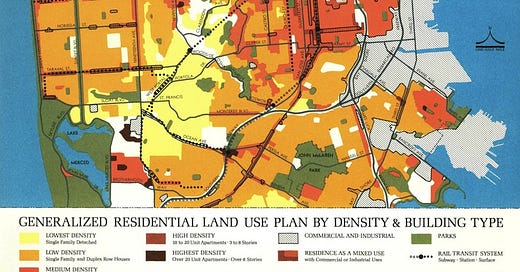In 2005, Ed Glaeser, Joseph Gyourko, and Raven Saks published “Why Is Manhattan So Expensive?”. It is, along with some related work at the time, the intellectual genesis of the modern YIMBY movement. Regulatory restrictions can be thought of as a sort of tax on new housing, often one that is entirely wasted. If there is a gap between market price and the marginal cost, then the regulation must have caused that. They eliminate the possibility of firms possessing market power by noting that there are thousands of firms which are employed in constructing housing. They also focus only on multifamily housing construction, to avoid having to consider the cost of buying and preparing land. They reason that land may not always be available in New York City, but the ability to add an additional floor to a project is. The focus on the cost of an additional floor makes it easier to find what the marginal cost actually is. Their method is to simply ask companies what they pay for materials and labor and set aside in profit, and compare.
The gap between marginal cost and price was enormous. The average price of a condominium in Manhattan, at the time of writing in 2002, was above $600 per square foot. Their upper bound on the actual physical cost of constructing a high-quality condominium, allowing generously for a return for the business owner, is below $300 per square foot. While it is not clear if in the efficient market whether price would fall or marginal cost would increase, in any case deregulating would cause many, many more people to be able to live in New York.
Yet, these extremely large estimates are actually an underestimate, for several reasons. First, we are not even allowing for feedback loops which affect demand. Suppose that building housing allows more people to move to Manhattan, where their actions spillover and benefit other people. This will then change the demand for housing. You can imagine a (perhaps silly) example where the marginal cost of building a floor is the same in a desert wasteland as in Manhattan; but because no one wants to move to a desert wasteland, the price which would be paid is very low. In a similar sense, the same gap between marginal cost and price is consistent with multiple levels of welfare, and also multiple levels of stringency. This is akin to how a very low tariff and a very high tariff can both generate the same amount of revenue, but with the low tariff case being plainly socially better.
Second, there is learning by doing in the market for constructing housing, and there are also production technologies which require higher fixed costs that reduce the average price if and only if the market is sufficiently large. We are inferring the losses from the gap between price and marginal cost, but this is obviously misleading if the price changes what the marginal cost is.
Glaeser and Gyourko, with a host of co-authors, put some numbers on it in “Why Has Construction Productivity Stagnated?”. The sheer number of firms which they document in their first paper is an indicator of inefficiency – the projects that firms tackle are smaller, and so they don’t invest in the best technologies that could be sustained by big projects. Productivity in construction over time tracks the number of buildings built, and the imposition of land use regulations (primarily in the 70s) lead to productivity reversing. If the distribution of firm sizes in construction were the same as in manufacturing, construction productivity would be 60% higher.
Roundabout evidence for the effect of market size on productivity can be found in the ready-mixed concrete industry. Syverson (2004) showed how denser markets leads to small, inefficient producers being unable to survive, and the average productivity going up. (Backus (2021) would argue that it’s not even due to reallocation between firms, but simply due to managerial slack. In more competitive markets, firms are simply better run).
The ill-effects of land use regulation is something which is doubtless familiar to many of my readers. They are, nevertheless, worse than you think. We could be a much richer nation, if only we let ourselves be so.



Not sure about this marginal cost analysis by Glaeser. It doesn’t make sense and all the critiques were overlooked.
https://www.fresheconomicthinking.com/p/glaesers-dreadful-housing-analysis
I don't see why greater demand on it's own would increase competition and productivity.